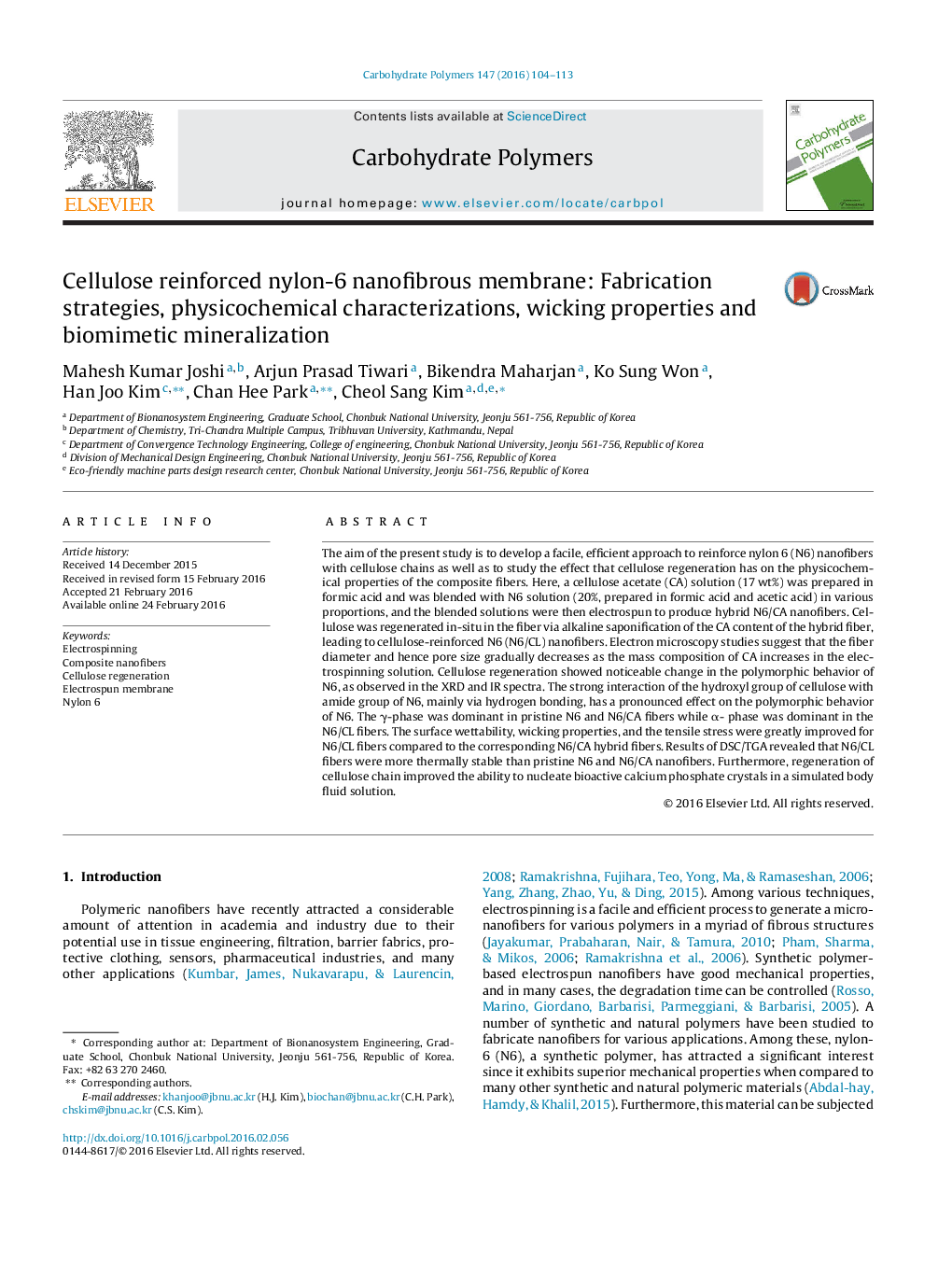| کد مقاله | کد نشریه | سال انتشار | مقاله انگلیسی | نسخه تمام متن |
|---|---|---|---|---|
| 1383079 | 1500611 | 2016 | 10 صفحه PDF | دانلود رایگان |
• N6/CL composite fibers were obtained via electrospinning and deacetylation.
• Fiber diameter and pore size controlled varying the composition of component polymers.
• N6/CL composite fiber were more thermally stable than pristine N6 and N6/CA fibers.
• Wicking rate was pronouncedly enhanced due to cellulose regeneration.
• Tensile properties and biomimetic mineralization were improved.
The aim of the present study is to develop a facile, efficient approach to reinforce nylon 6 (N6) nanofibers with cellulose chains as well as to study the effect that cellulose regeneration has on the physicochemical properties of the composite fibers. Here, a cellulose acetate (CA) solution (17 wt%) was prepared in formic acid and was blended with N6 solution (20%, prepared in formic acid and acetic acid) in various proportions, and the blended solutions were then electrospun to produce hybrid N6/CA nanofibers. Cellulose was regenerated in-situ in the fiber via alkaline saponification of the CA content of the hybrid fiber, leading to cellulose-reinforced N6 (N6/CL) nanofibers. Electron microscopy studies suggest that the fiber diameter and hence pore size gradually decreases as the mass composition of CA increases in the electrospinning solution. Cellulose regeneration showed noticeable change in the polymorphic behavior of N6, as observed in the XRD and IR spectra. The strong interaction of the hydroxyl group of cellulose with amide group of N6, mainly via hydrogen bonding, has a pronounced effect on the polymorphic behavior of N6. The γ-phase was dominant in pristine N6 and N6/CA fibers while α- phase was dominant in the N6/CL fibers. The surface wettability, wicking properties, and the tensile stress were greatly improved for N6/CL fibers compared to the corresponding N6/CA hybrid fibers. Results of DSC/TGA revealed that N6/CL fibers were more thermally stable than pristine N6 and N6/CA nanofibers. Furthermore, regeneration of cellulose chain improved the ability to nucleate bioactive calcium phosphate crystals in a simulated body fluid solution.
Journal: Carbohydrate Polymers - Volume 147, 20 August 2016, Pages 104–113
